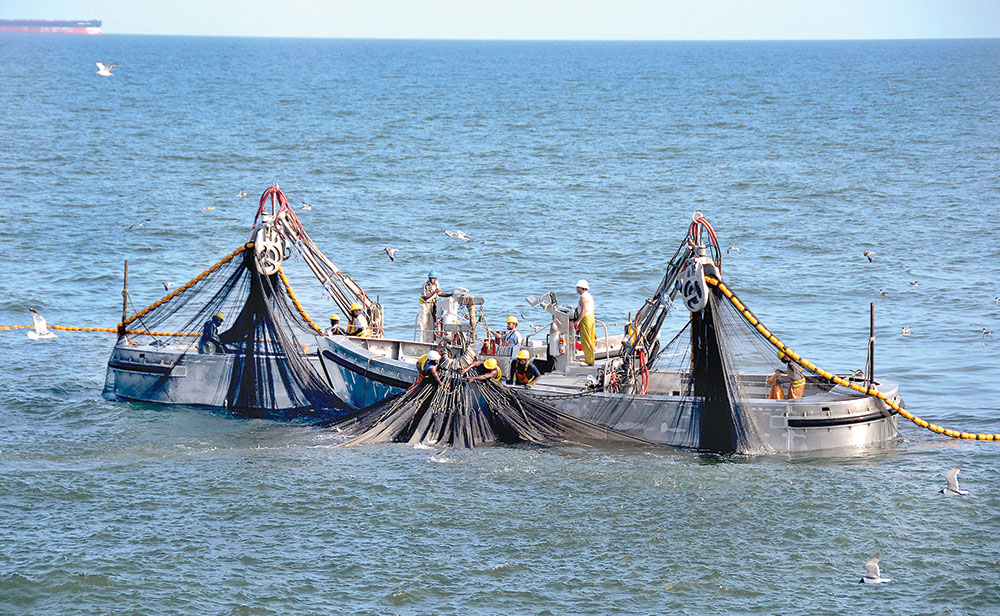New study to check if over-harvesting could be starving Va. ospreys

The saga of the future of Virginia’s menhaden reduction fishery on Chesapeake Bay continues to unfold as the Atlantic States Marine Fisheries Commission (ASMFC) Menhaden Management Board approved a motion on Tuesday, Aug. 6, that could lead to further regulations of the fishery.
The management board approved a motion to establish a “workgroup” to consider and evaluate “precautionary options” in the regulation of the state’s menhaden fishery.
This includes considering time and area closures of Virginia’s menhaden reduction fishery “to be protective of piscivorous birds and fish during critical points of their life cycle.”
The approval to create a workgroup came on the heels of a motion made by Maryland Commissioner Lynn Fegley, who serves as director of Fishing and Boat Services at the Maryland Department of Natural Resources (DNR).
She introduced a motion to “initiate an addendum (document) to the Atlantic Menhaden Interstate Management Plan that would regulate menhaden purse net fishing of boats over 300 tons.” This was specifically directed at the Ocean Harvesters fleet out of Reedville, the only menhaden reduction fishery fleet on the East Coast.
Fegley’s motion stated that the “document should include seasonal (fishing) closures of Chesapeake Bay waters (inside the Colregs line)” but should not consider changes in the bay menhaden cap of 51,000 metric tons currently allowed from Virginia waters.
She also stated the addendum should contain options to re-evaluate seasonal closures within the bay after two, three and four years and to create a “development team (that) should consult with outside experts as necessary to identify spatiotemporal patterns of predatory demand for menhaden.”
Maryland Commissioner and a sixth generation commercial fisherman Russell Dize spoke in favor of Fegley’s motion stating that there are “no” menhaden in Maryland waters right now and the state’s watermen are having to purchase menhaden bait from bait dealers in the State of Maine.
He noted he worked on “pogy boats” as a young man and knows how efficient the boats are at catching fish. “Think about us in Maryland, we do not get any fish if they can not get through Virginia.”
After Fegley’s motion two motions were made afterwards, one to postpone the matter until October and the other from Virginia representative Patrick Geer, Virginia Marine Resources Commission (VMRC) chief of Fishery Management to “amend to postpone (the motion) indefinitely.”
Geer said Fegley’s motion “singled out an industry on grounds of public opinion . . . and not science.” Geer’s motion and the other one were both killed on 9-9 tie votes.
Subsequently, Commissioner Proxy Dr. Allison Colden, Chesapeake Bay Foundation Maryland Executive Director offered a substitute motion to establish a workgroup that was approved unanimously. The group is expected to report results of their discussions to the Menhaden Management Board at its October 2024 meeting.
Ospreys
Opponents of purse net menhaden fishing in Virginia waters contend that the lack of a menhaden population in Chesapeake Bay is due to over harvesting from commercial fishing and is negatively impacting the food supply of the bay’s osprey population.
At the ASMFC menhaden meeting, Dr. Barnett Rattner and David Ziolkowski of the U.S. Geological Survey presented a comprehensive report of the state of the osprey population in the United States, which shows the ospreys, along with other birds of prey, have made remarkable comebacks since the disastrous effects of the chemical DDT that caused eggshell thinning in birds in the 1960s.
Ziolkowski explained that after measures were taken, including banning DDT, between 1966 and 2022, the eastern population of osprey increased by about 300%, and the Atlantic Coast population increased by about 587%. In the Chesapeake Bay it has increased by about 1,800% since the 1960s.
He continued, “…what these numbers bear out is that osprey have made an astounding recovery by all accounts. The numbers are now in excess of historical numbers and in part that’s because they’ve returned to a world that’s very different than the world was before they started declining.”
Ziolkowski did note that during the period from 2012 to 2022, “something’s going on,” as there has been a leveling off in the growth of the osprey populations in the mid-Atlantic and in other areas of the country. He noted that bird populations “do not grow forever because of limited caring (food and shelter) capacity.”
There has been considerable conversation recently concerning the decline of the osprey population on Mobjack Bay on Virginia’s western shore of Chesapeake Bay. The conversation at the meeting suggested that the decline in food supply could be associated with commercial fishing or climate change or increased demand on the food supply in specific areas of the bay. There has been an increase in the last decade of brown pelican and double crested cormorants that feed on menhaden too.
It has been noted time and time again by Ocean Harvesters’ officials that the reduction fishery fleet out of Reedville does not fish in or near Mobjack Bay.


